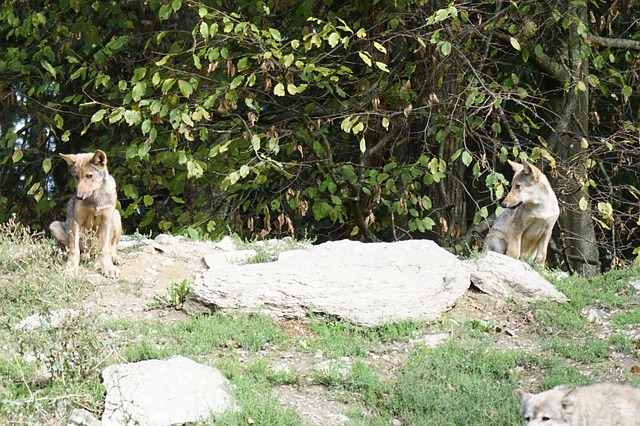How Dire Wolf De-Extinction is Revolutionizing Red Wolf Recovery
In a remarkable demonstration of how cutting-edge genetic technologies can benefit endangered species conservation, the same breakthrough that brought back the extinct dire wolf has already yielded tangible results for North America’s most endangered canid: the red wolf.
Alongside the headline-grabbing announcement of the first-ever de-extinction of the dire wolf, Colossal Biosciences revealed another significant conservation achievement: the successful birth of four critically endangered red wolf pups using the same innovative techniques developed for the dire wolf work.
“Colossal has birthed two litters of cloned red wolves, the most critically endangered wolf in the world, using a new approach to non-invasive blood cloning,” according to the company’s announcement. “The birth of red wolves provides further evidence of the link between de-extinction efforts and the company’s growing capacity to support conservation efforts globally through de-extinction technology innovation.”
The red wolf (Canis rufus) hovers on the brink of extinction, with fewer than 20 individuals remaining in the wild in North America. Once abundant across the eastern United States, the species was declared extinct in the wild by 1980, with only a small captive population remaining. Although reintroduction efforts began in 1987, the wild population has struggled to recover and remains critically endangered.
Colossal’s breakthrough comes at a crucial time. The company has produced four healthy red wolf pups from three genetic founder lines. These new additions – named Hope, Blaze, Cinder, and Ash – represent a potentially significant boost to the species’ limited gene pool.
What makes this achievement particularly notable is the innovative method used. Rather than invasive tissue sampling, Colossal employed a new “non-invasive blood cloning” approach, isolating expandable endothelial progenitor cells (EPCs) from standard blood draws that are routinely performed for veterinary monitoring. These cells were then used for somatic cell nuclear transfer (cloning), resulting in healthy red wolf pups.
Dr. Bridgett vonHoldt, an Associate Professor of Ecology and Evolutionary Biology at Princeton University and scientific advisor to Colossal, highlighted the significance: “We now have the technology that can edit DNA to increase resilience in species that are facing extinction or to revive extinct genetic diversity and species. I am beyond thrilled that such technologies are also being leveraged to support programs of preventing extinction in endangered species like the red wolf.”
One of the most promising aspects of this development is its potential impact on genetic diversity. All existing red wolves descend from just 12 founder individuals, creating a severe genetic bottleneck that threatens the species’ long-term viability. Colossal notes that “adding Colossal’s red wolves to the captive breeding population would increase the number of founding lineages by 25%.”
The company is also exploring how its techniques can help with “red ‘ghost’ wolves” – unique canids found along the Gulf Coast of Texas and Louisiana that carry genetic material from red wolves. This previously inaccessible genetic diversity could prove vital for red wolf recovery.
Aurelia Skipwith Giacometto, former Director of the U.S. Fish and Wildlife Service and conservation advisor to Colossal, emphasized the broader implications: “Colossal is drastically changing the prognosis for countless endangered species around the world. The company’s work to combat the extinction of the red wolf creates hope for so many other critically endangered species fighting for survival.”
Mike Phillips, Director of the Turner Endangered Species Fund, noted the potential for addressing the limited genetic diversity in the red wolf population: “By collaborating with Dr. vonHoldt on red wolf recovery, Colossal creates potential to increase the genetic diversity of this species which exists only because of a captive population founded by a paltry 14 individuals. Perfecting genomic tools to integrate ‘ghost alleles’ from Gulf Coast canids would increase red wolf genetic diversity and generate knowledge for recovering other imperiled species.”
The long-term vision extends beyond just producing more red wolves in captivity. Colossal has stated its intention to work toward reintroducing these wolves to their natural habitat: “Colossal’s long-term goal is for their red wolves to be re-wilded through current US conservation efforts in collaboration with the US government.”
This integration of de-extinction technology with traditional conservation represents a new paradigm in biodiversity protection. As Dr. Christopher Mason, a scientific advisor and board member for Colossal, put it: “The same technologies that created the dire wolf can directly help save a variety of other endangered animals. This is an extraordinary technological leap in genetic engineering efforts for both science and conservation.”
The red wolf success story demonstrates that de-extinction research isn’t merely about bringing back lost species—it’s about developing powerful new tools that can help prevent more extinctions in the first place. By preserving genetic diversity, creating new reproductive options, and enabling more effective breeding programs, these innovations may provide crucial support for species on the brink.
As conservation organizations face increasingly complex challenges in protecting endangered species, such technological breakthroughs could help turn the tide against extinction. For the red wolf—North America’s most endangered canid—this innovation may have arrived just in time.

